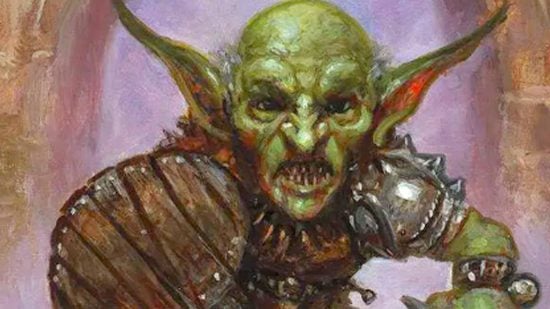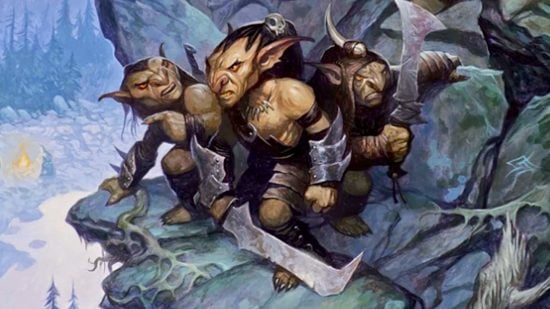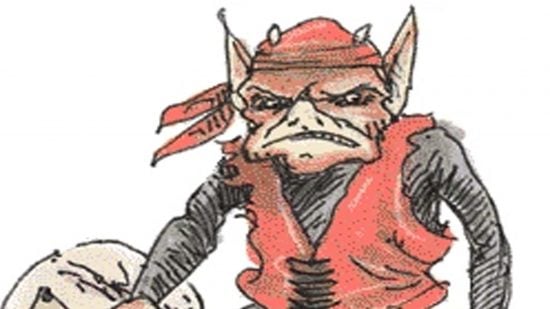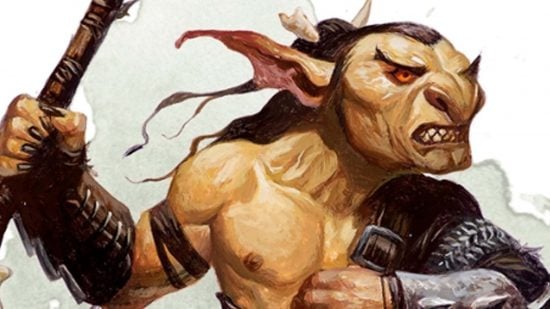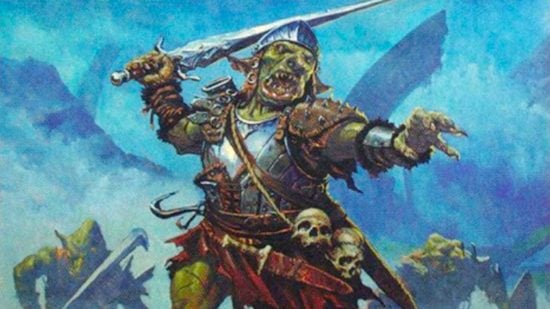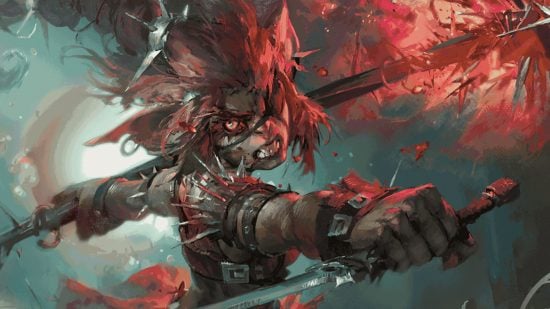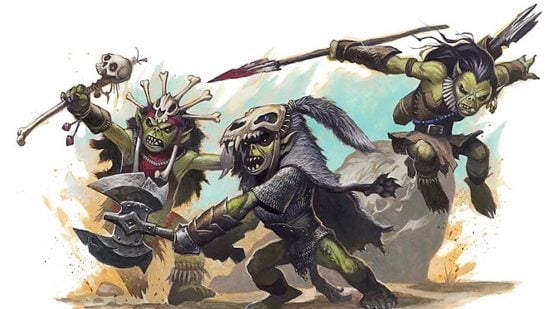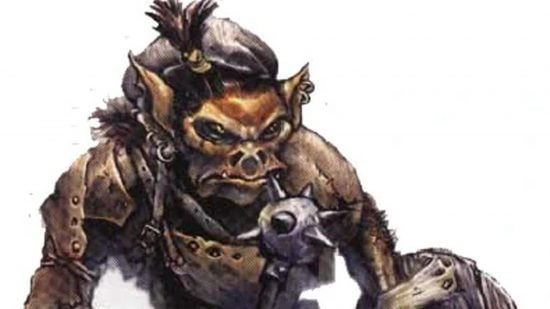The DnD Goblin 5e race is the latest iteration of a classic fantasy creature that’s been with DnD since before the game even existed. First introduced in the fantasy supplement to D&D’s predecessor, Chainmail, these small yet mighty creatures have popped up to halt the progress of adventurers in every edition ever sense.
Nowadays, though, DnD Goblins are no longer mere monsters to slay; they’re one of the fully playable DnD races, and make delightfully vicious additions to fifth edition D&D parties.
This compact guide will explain all you need to create a Goblin 5e Dungeons and Dragons character for your game, including all the core Goblin DnD stats and race features – as well as some loose DnD classes recommendations and DM tips on using Goblins in hostile encounters.
If you’re exploring non-standard starting races for your next DnD character builds, you could also check out our Goliath 5e and Tabaxi 5e race guides for starters. Or, for a bit of technical support, sample our guides to the best DnD character creators and DnD character sheets.
If you’re all about the little green dudes, though – read on. Here’s what you should know about the Goblin 5e race:
What are DnD Goblins?
D&D publisher Wizards of the Coast’s current core rules do not speak kindly of DnD Goblins, summarising them as “small, black-hearted humanoids that lair in despoiled dungeons and other dismal settings.”
“Individually weak”, it adds, “they gather in large numbers to torment other creatures.” Further, we read via DnD Beyond, Goblins are “motivated by greed and malice”; they “delight in the torment of others and embrace all manner of wickedness”. They can often be found in raiding parties, enslaved to a Bugbear 5e mercenary or warlord. A generally nasty but pitiable lot, Goblins worship their fearsome, hell-bound DnD god, Maglubiyet, as much out of terror as admiration.
Until quite recently, that was more or less it for DnD 5e Goblin lore. They’d first become a playable race in Dragon Magazine issue #141, in January 1979; then they were properly fleshed out for DnD 5e in 2016’s Volo’s Guide to Monsters – but they were still usually treated as little more than low level enemy grunts.
However, in May 2022, Goblins were among a number of races that got tweaks in Wizards of the Coast’s new bestiary DnD sourcebook, Monsters of the Multiverse. As well as minor changes to existing Goblin traits, this book added more depth to their lore, explaining that, long before their domination by Maglubiyet, “early goblins served in the court of the Queen of Air and Darkness, one of the Feywild’s archfey”.
Their uncanny ability to exploit larger enemies’ weak spots and evade danger, we learned, was a boon from said Fey queen – and Goblins now get the Fey Ancestry race trait, helping them avoid being charmed by enemies.
Significantly, the book also underlines that “many goblins pursue their own destinies, escaping the plots of both archfey and gods.”
Goblin 5e race
The common Goblin 5e race traits for players (found in Monsters of the Multiverse) are as follows:
| Stat | Value |
| Default Ability Score Increases | +2 DEX, +1 CON |
| Creature type | Humanoid, Goblinoid |
| Size | Small |
| Speed | 30 feet |
| Trait | Effect |
| Darkvision | Can see fine in dim light up to 60 feet away as if it were bright light and darkness as if it were dim light, with everything appearing in shades of gray. |
| Nimble Escape | The Disengage and Hide actions can be used as a bonus action on your turn. |
| Fey Ancestry | You get Advantage on making saving throws against, and on ending, being charmed. |
| Fury of the Small | You deal extra damage to targets larger than yourself, with the damage equal to your proficiency bonus. You can do this once per turn, and a total number of times equal to your proficiency bonus. All uses are regained after a long rest. |
Best classes for Goblin 5e characters
The removal of locked-in ability score increases has freed Goblins up as great options for pretty much any damage-focused class.
Scaling damage boosts from Fury of the Small, combined with the flexibility of Nimble Escape, mean the Fighter 5e and Ranger 5e classes are both wonderful options. The extra damage from Fury of the Small will help even your odds in a scrap, while Nimble Escape allows a slick getaway if you’re caught in close combat and your main weapon is ranged.
If you go Fighter, remember not to equip any heavy weapons – unless your character has some other workaround, all small-sized creatures have disadvantage when using them.
Naturally, many Goblin players will be drawn to the Rogue 5e class, and sure, the damage boost will help here – but you’ll also end up with a wasted, duplicated core ability: the Rogue’s Cunning Action class ability is just a more versatile version of Nimble Escape – and either will use up your one bonus action per turn, so having both is useless.
It should be noted that Fury of the Small also adds damage to spells – so Goblins can be nifty in the Wizard 5e or Warlock 5e classes, making excellent use of their uncanny ability to slip away from danger.
Goblin 5e Monster stats
Players don’t get to have all the fun when it comes to the Goblin 5e race – these little green folks are a diverse bunch, and many remain firmly in the camp of hostile NPC (a.k.a. DnD monsters) under the control of the Dungeon Master.
Here are the base Goblin 5e monster stats:
| Stat | Value |
| Armour Class | 15 |
| Hit Points | 7 (2d6) |
| Speed | 30 feet |
| Attribute | Value | Modifier |
| Strength (STR) | 8 | -1 |
| Dexterity (DEX) | 14 | +2 |
| Constitution (CON) | 10 | +0 |
| Intelligence (INT) | 10 | +0 |
| Wisdom (WIS) | 8 | -1 |
| Charisma (CHA) | 8 | -1 |
| Stat | Value |
| Skills | Stealth +6 |
| Proficiency Bonus | +2 |
| Senses | Darkvision 60 feet |
| Passive Perception | 9 |
| Languages | Common, Goblin |
| Challenge Rating (CR) | ¼ (50 XP) |
| Abilities | Nimble Escape: Can use the Disengage or Hide action as a bonus action on its turns. |
| Action | Type | Target | Range | Hit bonus | Damage | Damage type |
| Scimitar | Melee weapon attack | Single | 5 feet | +4 | 1d6+2 | Slashing |
| Shortbow | Ranged weapon attack | Single | 80/340 feet | +4 | 1d6+2 | Piercing |
DMs have to be a bit clever to get the most out of Goblin encounters. A sizable swarm of Goblins descending on lower level parties is a great option to test a team early on. Dotted in ones and twos, out in the open Goblin enemies pose barely any threat – but larger groups, carefully placed throughout dungeons to ambush the party, are a different matter.
A lone Goblin will have no adventurers trembling – but 20 of them, with some Goblin Bosses and Goblin Gang Members in the mix too, can make for quite the tense encounter. While Goblins aren’t usually known for their magical prowess, those with magical talents (known as Booyaghs), can be included as well.
Unfortunately, at the time of writing, no official stat blocks exist for any of these fascinating Goblin variants (which you’ll find in Volo’s Guide to Monsters) leaving them firmly in the fungible lands of DnD homebrew.
